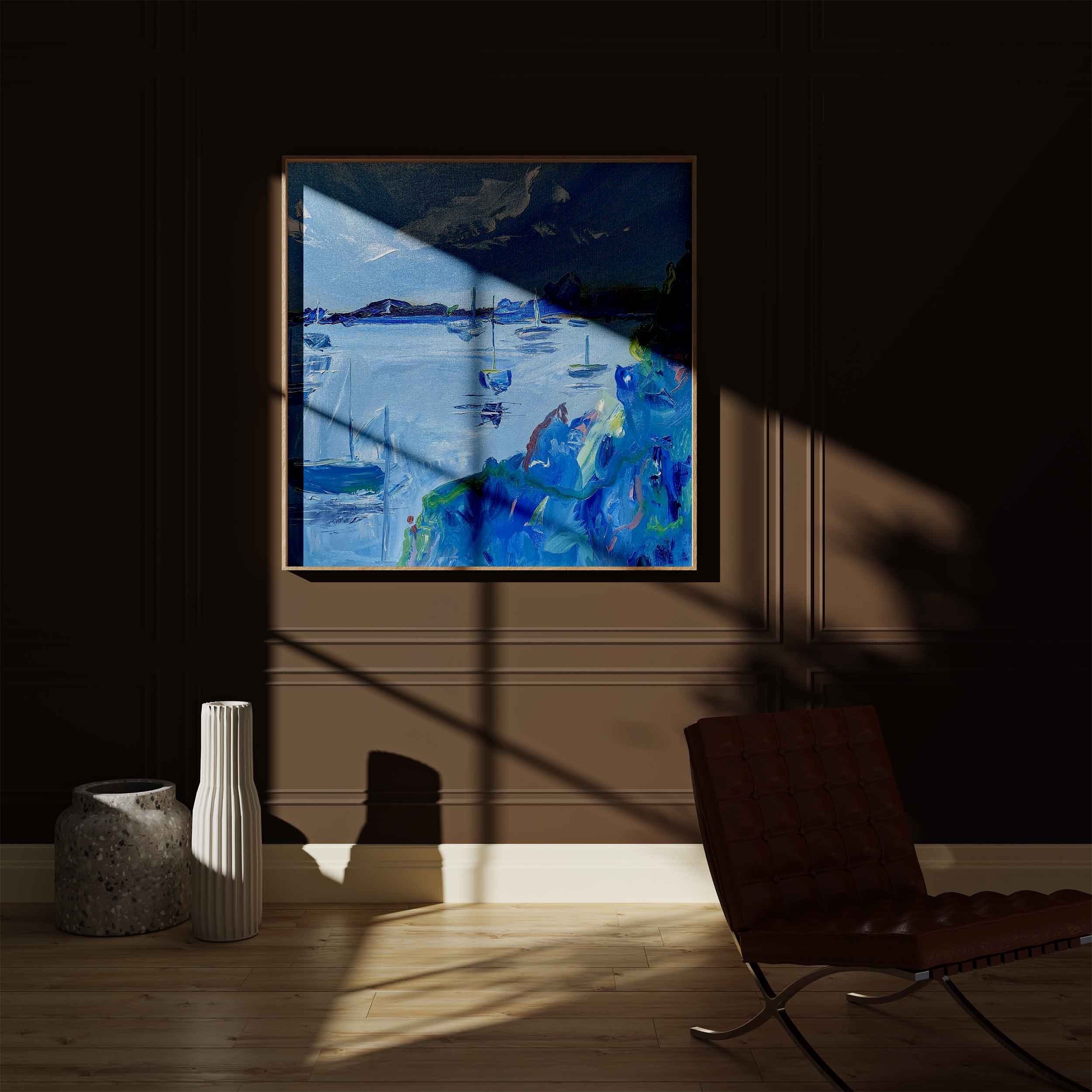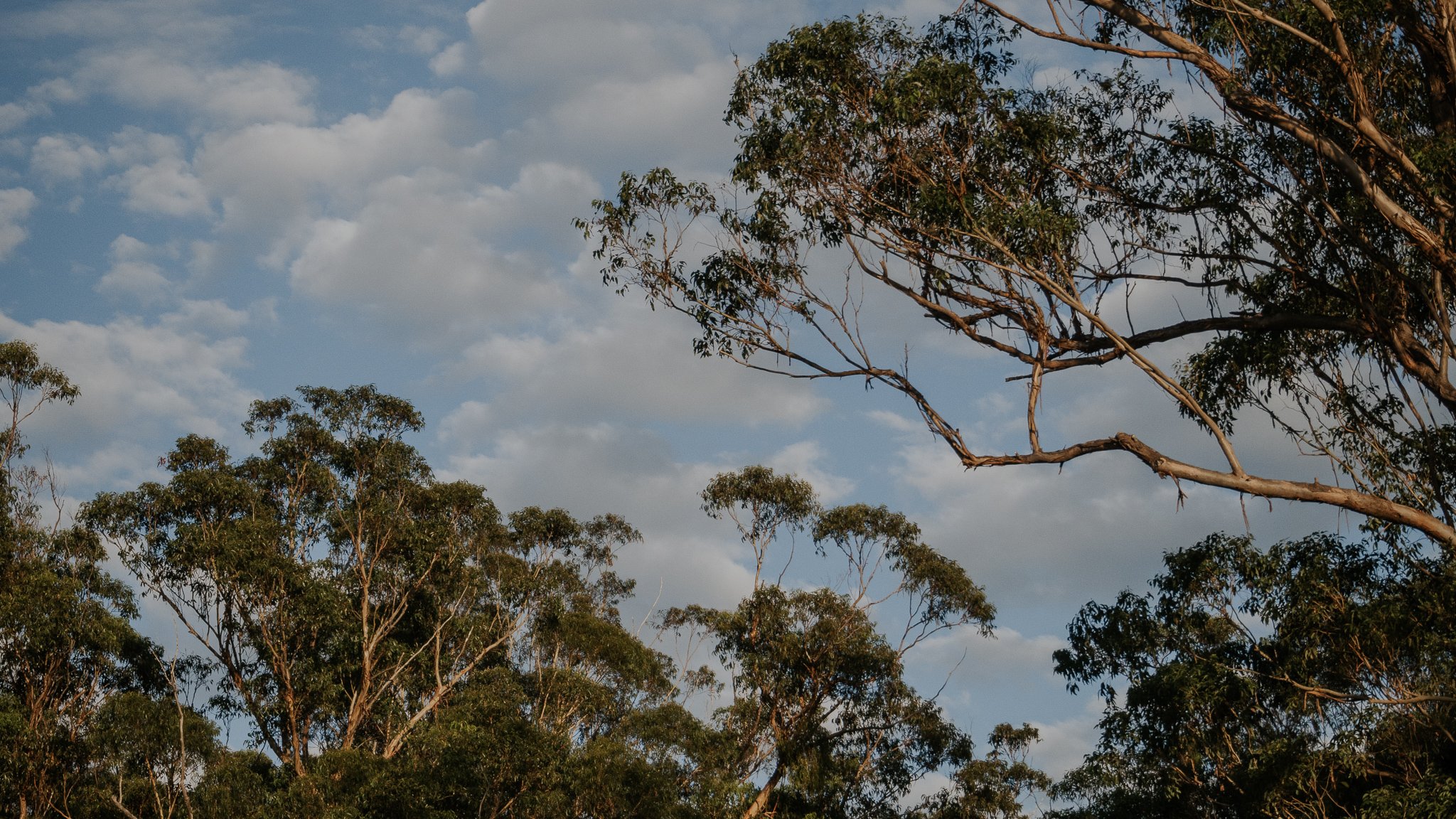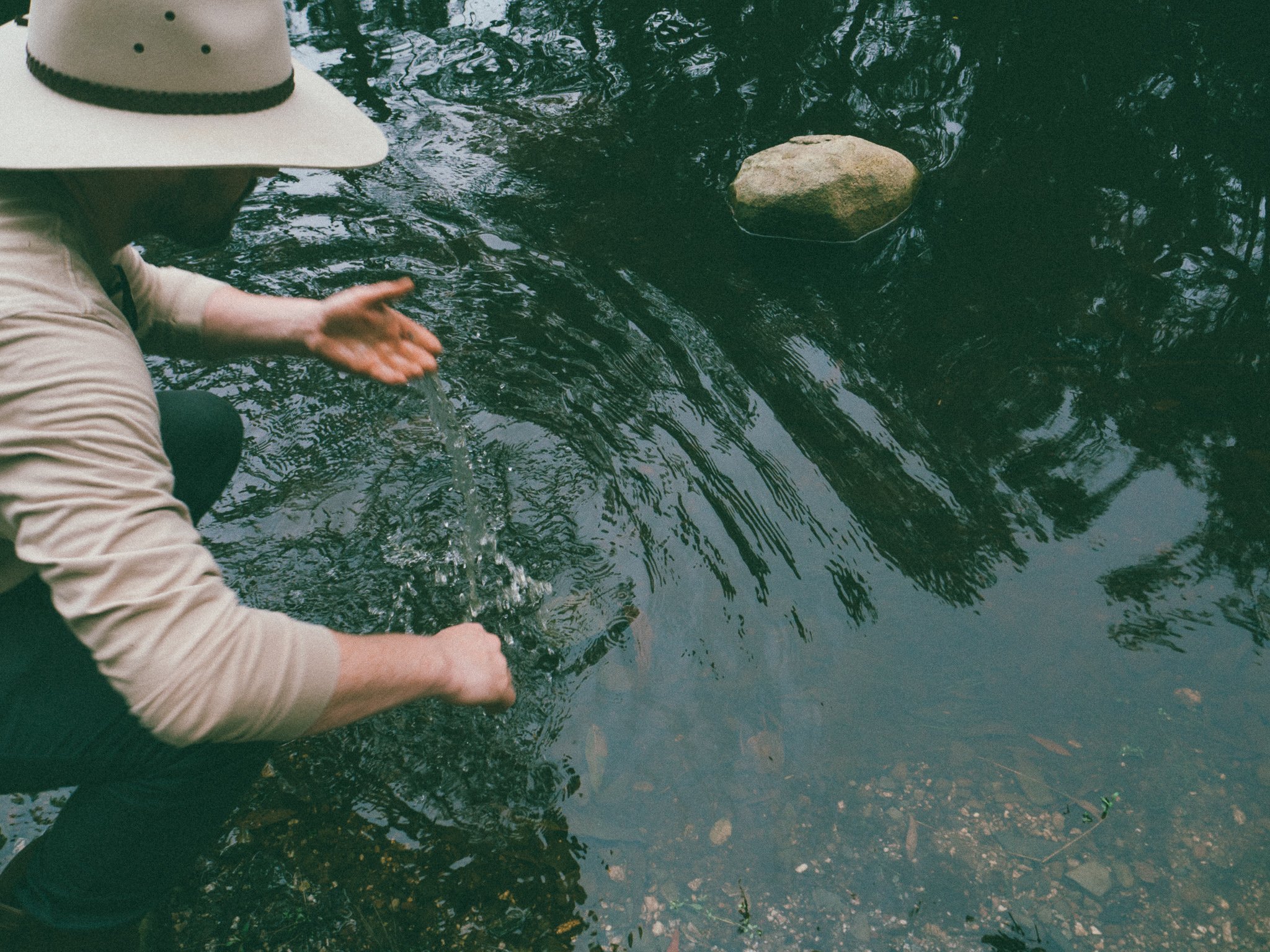Wellbeing WILD Mag Feature
Painting with nature
Nataliya Daniel is a Sydney-based painter, educator and neuroscientist with a passion for building community. Her work is inspired by nature and those fleeting closed-eyed moments in which one can experience both the comfort and scale of the world.
WellBeing Wild 14 April 2022
Words Byron Smith
A couple of years ago, I went to one of Nataliya Daniel’s exhibitions. On display was a striking, painted work of the creek at sunset where I grew up, on Yuin Country on the south coast of New South Wales. I remember the black silhouette of draping casuarina trees with a golden slither of creek shining behind them.
Standing in the exact spot from which Nat painted this, I recently had the pleasure of talking to the artist and neuroscientist about her work, growing up in Ukraine and the intersection of art and science. After a brief catch-up on the shore, we decide to take the old pale row boat upstream to see what materials we can find along the shrubby banks. As the saying goes, artists can see beauty in everything and today, up river, Nat tells me we’re looking for smooth, soft river stones. They might look unassuming, she tells me, but when their grey surface is scraped against a hard rock, they’ll show their colours — burgundy, mauve and ginger. “I’ll take these back to use as pigment when I paint the landscape,” says Nat. “If you find any interesting sticks or dried grasses, bring those too; we can use them as paint brushes.” I’m surprised at how many useful art materials are right here on the banks.
Nat tells me she was playing with dirt well before she was painting with it. “I first learnt to interact with nature back home in Ukraine, squeezing berries to make purples, drawing with sticks in the snow.” Here in Australia, the landscape looks a little different, but Nat’s practice and love of nature is the same; the reds and earthy greens of our country are what really stole her heart.
I was lucky to see a collection of Nat’s work in September 2020 where she created a charcoal series from the burnt debris of the bushfires. Reflecting on her experimental process, Nat compares her practice to kids’ imaginative play. “You just have to be open to what is around you,” she says. I reflect on my own toddler and her endless imaginative play, which, thanks to social conditioning, will no doubt gradually diminish.
For Nat, nature and family are endless sources of inspiration, and most of her childhood memories are rooted in these two pillars. Nat recalls that each family in her Ukrainian village had a plot of land and a cottage — “the dacha / to support their work in the city. “We grew veggies, climbed fruit trees and traded our berries in newspaper cones with our neighbours,” she recalls. Nat’s great-aunt lived in a village with no running water and only one lightbulb; “she’s well into her 70s now and she’s the poster image of a plump grandma with a folk scarf around her head holding a log over her shoulder!”
Nat tells me she was playing with dirt well before she was painting with it. “I first learnt to interact with nature back home in Ukraine, squeezing berries to make purples, drawing with sticks in the snow.”
Idyllic as it sounds, Nat’s community was poor. They lived on the land by necessity, hand-making anything from butter to clothing and inventing solutions to replace items they couldn’t afford. “I am so grateful for my privilege in Australia, to be able to choose to live and paint sustainably, but I never felt ‘poor’ growing up — I was surrounded by the generosity of community, family and the land,” she shares.
Those principles have shaped the way Nat paints today and informed her values and practice as both an artist and person in the world. Sustainability is at the core of everything she creates and how she operates her business as an artist. “I offer repairs for accidents, my canvases are hand-stretched right here in Enmore by Pigment Lab, my paints are just oil and pigment, and I teach creative skills in my workshops for long-term impact,” she says.
As we paddle on, I’ve proudly collected a few straight dried reeds from the creek that look to me like the perfect brush.
I’m hoping we can make something of it for my painting attempts later. Nat tells me her childhood has made her fascinated with “how we interact with our environment and how we create meaning”. I can certainly relate to the importance of the relationship we have with the land, and the many ways we rely on it to enrich and nourish us; many of Nat’s wisdoms ring true in my own line of work, helping people grow food in the city.
We drift up to the sloping bank at the property and cast our rope around a casuarina tree.
With pockets full of fibres, stone and other flotsam, we stroll up the paddock to begin our painting session.
Nat is heading back to Sydney tomorrow to prepare for one of her painting workshops, which generally focus on reflection:
“I ask my students to choose a moment from their lives, such as a visit to their favourite swimming hole, or find a wistful travel photo and focus on what about that place evokes emotion.”
Nat says most of the people who come along value the moment of pause her workshops offer and relish the opportunity to be intentional and creative. During a workshop, people can exhale and escape in the earthy, warm atmosphere, and every person gets something different from the session: the joy of finishing a piece they can proudly frame or gift, trying a new creative skill, or simply having a fun evening out with friends.
What I find most fascinating about Nat is her work as a neuroscientist. There’s a surprising synergy between science and art, she says:
“They both encourage making mistakes; in science you can’t ever be proven right — rather, you try to prove a theory wrong.”
Nat believes art can be an ouroboros of making rules and trends and breaking them. She explains how art and creativity are integral to science: “In a western context, we instinctively view the two as separate. The artist is free, wild, messy, colourful, and the scientist is structured, smart, boring even — but they share so much.”
I ask Nat if she has any tips for how I should start my painting of the row boat tied to the tree. “I would start by blocking in where your light and dark sections will be first, then have some fun layering unexpected colours on top. Neurology tells us that as long as the colour is the right level of light/dark, the image will still make sense.”
This article was written by Byron Smith, featured as part of Wellbeing Magazine’s WILD series. https://www.wellbeing.com.au/curious/painting-with-nature
Byron Smith is happiest when exploring anywhere off the beaten track or in the water. He is a novice naturalist, the co-author of Slow Down and Grow Something and owner of edible garden business Urban Growers.











